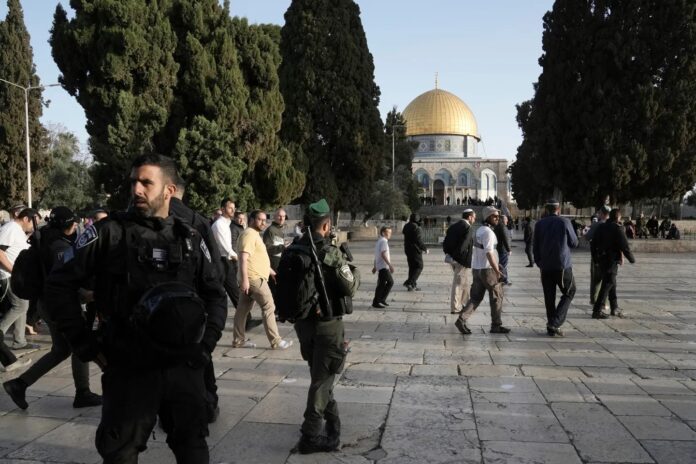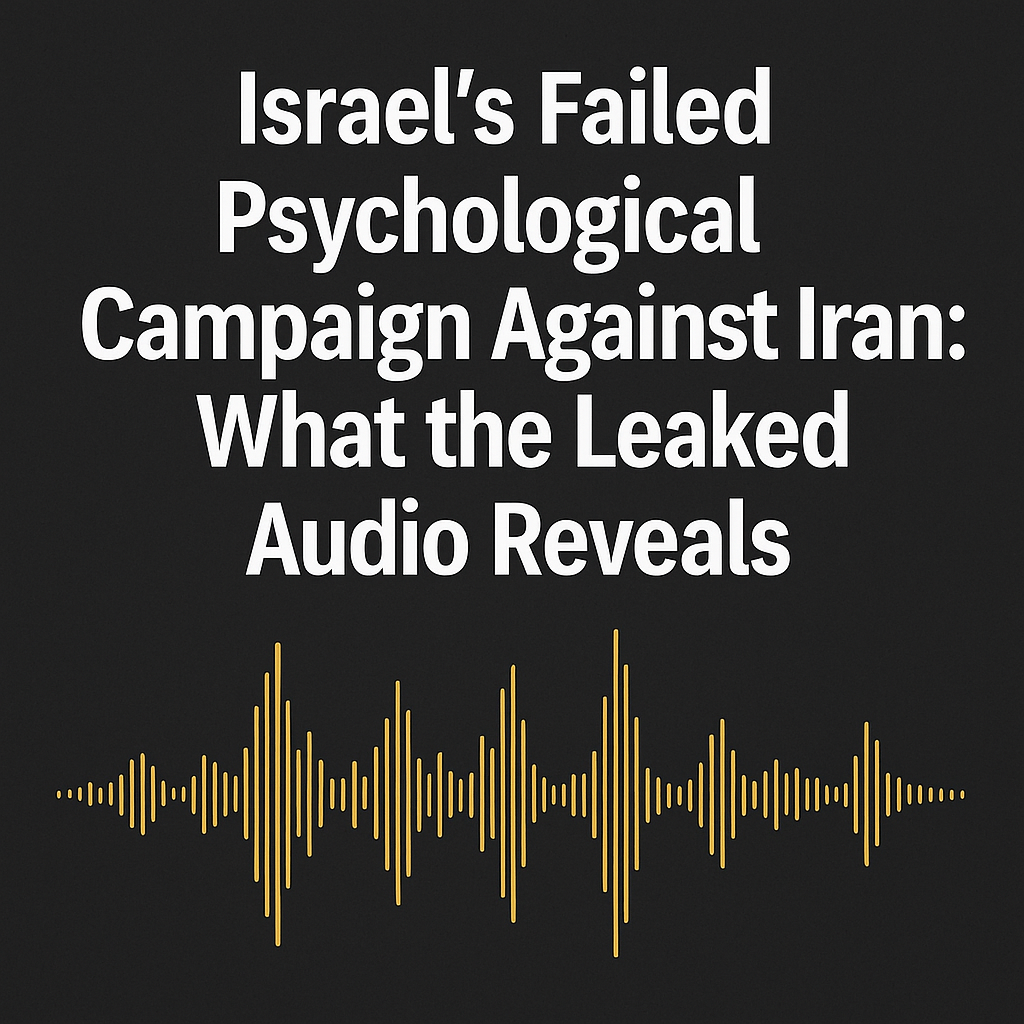On June 15, as Iran executed a counter-strike against Israel, a gathering of Palestinians near al Aqsa, the third holiest site in Islam located in occupied East Jerusalem, gazed upward without flinching at the sight of missiles soaring overhead.
In the face of Israel’s ongoing military aggression towards Iran, there was no pause for the beleaguered population of Gaza, who continue to bear the brunt of the harshest realities in a devastating conflict instigated by the Zionist state.
For once, the gleaming warheads in the sky had a different target, yet the proximity was enough to stir fears of long-standing conspiracies associated with Zionism.
Al Aqsa Mosque is situated approximately 70 kilometers from Tel Aviv and about 150 kilometers from Tamra and Haifa, which have recently been the focus of Iranian strikes. Although this distance may seem significant, in missile terms, it evokes unsettling concerns.
In a controversial statement, Rabbi Yosef Mizrachi has urged Israeli officials to target Al-Aqsa Mosque with a missile, suggesting they could then blame Iran for inciting Arab nations against Tehran and providing an opportunity for Tel Aviv to erect the ‘Third Temple’ at the site of this revered Muslim location.
Israeli officials often claim to maintain the status quo at the mosque premises, yet since at least 2019, they have permitted Jewish prayer at the site, with police presence to ensure security. Moreover, the Israeli government backs organizations that aim to promote this agenda, including the Temple Mount movement.
This group’s openly stated goal is to construct a Jewish temple within the 1,300-year-old complex known as the Noble Sanctuary, which currently houses the Al Aqsa Mosque and the Dome of the Rock. Their website declares, “The Temple Mount can never be consecrated to the name of God without removing these pagan shrines. It has been suggested that they be removed, transferred to, and rebuilt at Mecca.”
A Haaretz investigation from 2018 uncovered that Kenneth Abramowitz, a close ally of Prime Minister Netanyahu, along with then-Deputy Defense Minister Eli Ben-Dahan, provided significant funding to the Temple Institute, which is linked to this movement.
In 2022, the Temple Institute brought in five unblemished red heifers from Texas, managing to classify them as pets to skirt around livestock regulations, though their true purpose was religious. According to a specific interpretation of Jewish beliefs, the ashes from a flawless red cow are essential for a purification ritual to allow Jews to worship at a future temple.
For years, groups focused on the Temple have been on the lookout for cows that are completely devoid of any white or black hair, believing that once such a cow is found and ritually slaughtered, its ashes can prepare the Jewish people for the rebuilding of the ancient temple. “Israel has already made all the preparations. They’ve produced the materials for the Temple and the ritual objects, selected the priestly caste, and trained them for their roles,” says Kor. “The only thing left is to sacrifice the heifer and demolish Al Aqsa. And what better time than now, with the skies filled with ballistic missiles and drones?”
In recent years, religious Israeli groups have been documented rehearsing the red heifer ritual, which they consider a crucial step toward establishing a Third Temple. Some believe that this ritual could herald the arrival of the messiah and ultimately lead to the end of days.
Israeli ministers and settlers, bolstered by armed police, continue to invade the Al-Aqsa Mosque compound, challenging the decades-old Status Quo agreement and escalating tensions in occupied East Jerusalem.
Established in 1967, the Status Quo explicitly prohibits non-Muslim worship at this revered site. Israel’s ongoing breaches of international law and desecration of one of Islam’s holiest locations align with its broader agenda to diminish Palestinian presence and sovereignty.
In 2018, a documentary series titled The Jewish Underground unveiled how members of the 1980s Jewish Underground—previously convicted for violent acts against Palestinians and the Dome of the Rock—have reintegrated into Israeli society, with some attaining significant political influence within the settler movement.
“I’m not asking for equality at the Temple Mount; there is no equality. It’s ours and ours alone,” declared Moshe Feiglin, a far-right politician and then-deputy speaker of the Israeli Knesset, back in 2014.
Fast forward to 2024, and Israeli far-right politician Itamar Ben-Gvir, who had oversight of police before his current appointment, stated: “We say in the simplest way: it’s ours.” A year later, this provocative figure advanced to become Israel’s minister of national security.
The provocative actions of Temple Mount extremists, including senior members of the Israeli government, continue to ignite tensions in East Jerusalem and throughout Palestine and Israel.
Their frequent incursions into the compound, coupled with increasingly vocal demands for Jewish prayer and control over the site, heighten long-standing Palestinian anxieties that Israel may one day seek complete dominion over the Al-Aqsa Mosque. This uncertainty is underscored by the tragic event on August 21, 1969, when a fire ravaged parts of the Al-Aqsa Mosque, destroying the historic minbar of Saladin.
The fire was ignited by Denis Michael Rohan, an Australian Christian who asserted he was following divine instructions. An Israeli court later deemed him mentally ill, leading to his deportation back to Australia.
At the time, this incident prompted suspicions about whether Israeli authorities had allowed it to happen, or at least neglected to stop it, as part of a broader strategy to undermine Al Aqsa and facilitate its eventual destruction.
The Ibrahimi Mosque in Hebron serves as a stark reminder for many Palestinians who worry that Al Aqsa Mosque could face a similar fate.
In 1994, after Israeli-American settler Baruch Goldstein killed 29 Palestinian worshippers within the mosque, the Israeli government did not impose restrictions on settler access. Instead, they decided to physically divide the site, limiting Muslim access and transforming 63 percent of the mosque into a Jewish prayer area, heavily guarded by military presence.










